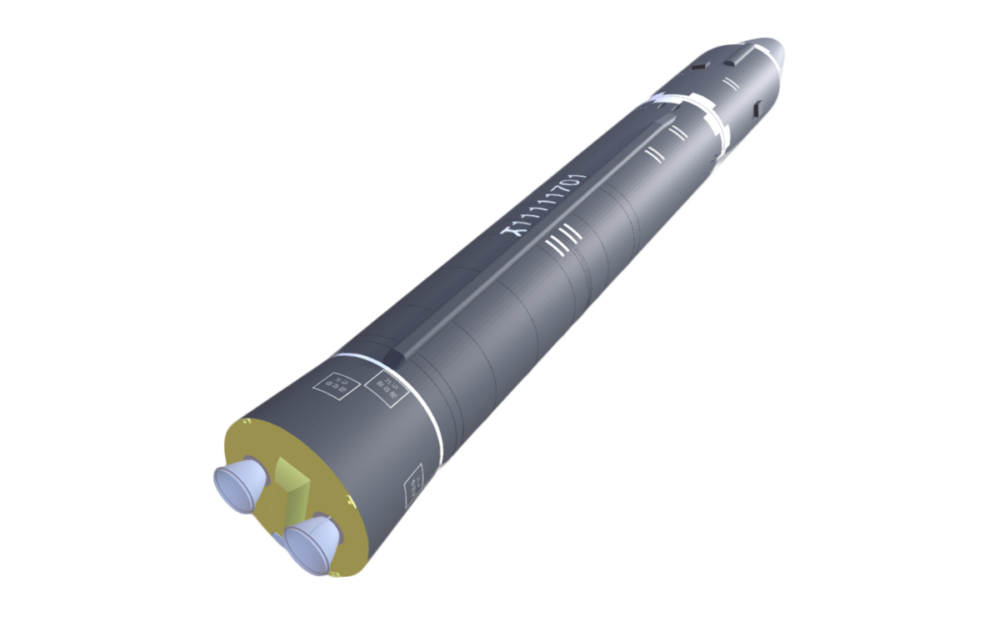
The CNS North Korea Missile Test Database
A collection of missile tests including the date, time, missile name, launch agency, facility name, and test outcome.
As part of its Soviet legacy, Georgia possesses a decommissioned nuclear reactor and three nuclear research institutes, as well as a number of military bases contaminated with radioactive waste. Nonproliferation challenges relevant to Georgia primarily relate to export controls.
Georgia does not possess or produce nuclear, chemical, or biological weapons, and is a party to the major nonproliferation treaties and regimes. [1]
Georgia is home to three nuclear research institutes. The Andronikashvili Institute of Physics on the outskirts of Tbilisi houses a nonoperational IRT-M research reactor. All fresh and spent fuel was transferred from the reactor facility to Scotland in April 1998 under a multinational effort known as Operation Auburn Endeavor. [2] The High Energy Physics Institute in Tbilisi is not known to house fissile material. There are reports that Sukhumi I. Vekua Institute of Physics and Technology (SIPT) once housed isotope production reactors and/or 2kg of 90% enriched uranium, though the whereabouts of the HEU is not known. [3] Georgia is a non-nuclear weapon state party to the Treaty on the Non-Proliferation of Nuclear Weapons (NPT) and the Comprehensive Nuclear Test Ban Treaty (CTBT), and has an Additional Protocol in force with the International Atomic Energy Agency (IAEA).
On 23 April 1998, after more than two years of negotiations, the United States, the United Kingdom, and Georgia successfully carried out Operation Auburn Endeavor, in which HEU- and LEU-based fresh and spent fuel was transferred from the shutdown IRT-M research reactor in the Andronikashvili Institute of Physics to the Dounreay Nuclear Complex in Scotland. Similar to Project Sapphire, in which the United States purchased approximately 600kg of weapons-grade uranium from Kazakhstan and shipped it to Oak Ridge National Laboratory in Tennessee, Auburn Endeavor enabled the West to help eliminate a potential nuclear proliferation risk. Though the operation violated British regulations against receiving nuclear material, London indicated that the safety and security of the material was important enough to make an exception. [4] U.S. government documents state that the material consisted of approximately 4.3kg of fresh fuel (largely HEU, with some LEU, as well), and approximately 800g of HEU/LEU-based spent fuel. [5] Documents from the UK House of Commons indicate that an additional 5.8kg of LEU-based fresh fuel and 3.7kg of LEU-based spent fuel were also removed. [6] Earlier attempts to negotiate a transfer of the material to Russia failed. [7] The United States reportedly paid Georgia $125,000 for the materials. [8] The project went by different names: the U.S. Department of Energy called it "Project Partnership," U.S. military personnel called it "Auburn Endeavor," Oak Ridge National Laboratory personnel called it "Project Olympus," and the Georgians called it "Program Export." [9] The IAEA has also helped Georgia to locate and secure radioactive materials. [10]
Like other states in the region, Georgia has struggled to combat the illicit trafficking of nuclear and radiological materials, with 13 criminal cases brought against suspected smugglers of radioactive materials between 2002 and 2010 alone. [11] According to analyst Alexander Kupatadze, "Georgia has emerged as a key transit point for various legal and illegal materials due to its geography, unsecured borders, internal conflict, and corruption." [12] Approximately one half of Georgia's 310km Black Sea coastline is located in Abkhazia, and is not monitored by Georgian authorities. The United States provided millions of dollars in training, equipment, and funding to improve export and border control systems in Georgia. Major programs included the Georgian Border Security and Law Enforcement (GBSLE) Assistance Program, the National Nuclear Security Administration's Second Line of Defense (SLD) program, the Global Threat Reduction Initiative (GTRI), the International Nonproliferation Export Control Program (INECP). [13] Such funds are used to provide communication and surveillance equipment, radioactive materials detection technology at entry points, and training for personnel in effective technology usage and materials analysis. [14] Additionally, experts from the U.S. Department of Commerce helped develop the legislative foundation for nonproliferation export controls in Georgia, the 1998 Law on the Export Control of Weapons, Military Equipment, and Dual-Use Items, which was the first export control law in the Caucasus. [15] The European Union (EU) and the Organization for Economic Cooperation and Development (OECD) have also provided training and equipment to improve border controls in Georgia. [16]
In June 2007, the French nuclear reactor design company Areva reportedly agreed to study the prospects for building a nuclear power plant in Georgia, and several months later the Georgian government announced the creation of a commission to study the issue. [17] However, Georgia's 1998 Law on Nuclear and Radiation Safety, which designates the nuclear-related responsibilities of various government bodies and bans the non-peaceful use of nuclear energy, currently prohibits the construction and operation of nuclear reactors with a capacity of more than 5MWe. [18]
Georgia acceded to the Biological and Toxin Weapons Convention (BTWC) on 22 May 1996. There is no evidence to suggest that Tbilisi possesses or is developing biological weapons. During the Soviet era, some vaccine manufacturing facilities in Georgia that were part of the Soviet Anti-Plague system possessed dual-use biological weapons production capabilities. The Biokombinat Production facility, for example, manufactured vaccines for sheep pox, swine plague, and sheep brucellosis, but also doubled as a biological weapons research facility. [19] Under the 30 December 2002 agreement between the United States and Georgia on cooperation in the area of prevention of proliferation of technology, pathogens and expertise related to the development of biological weapons, all dual-use equipment and selected buildings at Biokombinat were eliminated. [20] Also, the U.S. Department of Defense, through its contractor Bechtel National Inc., completed construction of the Epidemiological Monitoring Station at a Ministry of Agriculture laboratory in Tbilisi, and installed the Pathogen Asset Control System at the National Center for Disease Control, which holds Georgia's collection of especially dangerous pathogens, and the interim Central Reference Laboratory (CRL). [21] As a result of the joint effort between the U.S. DOD and the Georgian Ministry of Defense, the Tbilisi Central Public Reference Laboratory and repository opened in March 2011 to act as a repository for regional pathogens and host infectious disease detection and research training. [22, 23] In 2013, after finding that the laboratory was not functioning effectively, the Georgian government decided to transfer ownership of the research center to the National Center for Disease Control and Public Health (NCDC). [24] The U.S. Centers for Disease Control and Prevention's Global Health Informatics Program, in partnership with the U.S. Defense Threat Reduction Agency, also deploys Electronic Integrated Disease Surveillance Systems to monitor biological threats and enhance Georgia's capacity for quick response to disease outbreaks. [25]
Georgia is a founding member of the Organization for the Prohibition of Chemical Weapons (OPCW) and a party to the Chemical Weapons Convention (CWC). There is no evidence to suggest that Georgia possesses or is pursuing chemical weapons.
Georgia subscribes to the Hague Code of Conduct Against Ballistic Missile Proliferation (HCOC), and does not possess ballistic missile systems.
Sources:
[1] NTV, 8 December 1999; in "Sistema eksportnogo kontrolya za obychnym vooruzheniyem, a takzhe za produktsiyey i tekhnologiyami dvoynogo naznacheniya formiruyetsya v Gruzii," UNIAN (Kiev), No. 049 (084), 6-12 December 1999.
[2] "Multilateral Nonproliferation Cooperation: U.S.-Led Effort to Remove HEU/LEU Fresh and Spent Fuel from the Republic of Georgia to Dounreay, Scotland," Presented at the 1998 International Meeting on Reduced Enrichment for Research and Test Reactors, 18-23 October 1998.
[3] Emily Daughtry, Fred Wehling, "Cooperative Efforts to Secure Fissile Material in the NIS," The Nonproliferation Review, Vol. 7.1, Spring 2000, p. 100.
[4] Michael Gordon, "U.S., Britain Relocate Nuclear Material from Volatile Georgia," The New York Times, 21 April 1998, www.nytimes.com.
[5] Alexander W. Riedy, et al., "Multilateral Nonproliferation Cooperation: U.S.-Led Effort to Remove HEU/LEU Fresh and Spent Fuel from Tbilisi, Georgia to Dounreay, Scotland (Operation Auburn Endeavor/Project Olympus)," 40th Annual Meeting: Proceedings of the Institute of Nuclear Materials Management (Documation, 1999).
[6] Select Committee on Trade and Industry Minutes of Evidence, "Examination of Witness, Mr. D. Henderson (Questions 243 – 259)," 1 July 1998, United Kingdom Parliament, www.parliament.the-stationery-office.co.uk.
[7] Michael R. Gordon, "Russia Thwarting U.S. Bid to Secure A Nuclear Cache," The New York Times, 5 January 1997, pp. A1, A4.
[8] Ben Partridge, "Georgia: Nuclear Waste Arrives at Scottish Plant," Radio Free Europe/Radio Liberty, 24 April 1998, www.rferl.org.
[9] Robert N. Ceo, Kenneth A. Thompson, and Wesley J. Bicha, "Gamma Ray Measurements of Reactor Fuel Elements in the Republic of Georgia," 40th Annual Meeting: Proceedings of the Institute of Nuclear Materials Management (Documation, 1999).
[10] L. Wedekin, "Upgrading the Safety and Security of Radioactive Sources in the Republic of Georgia," International Atomic Energy Agency, 5 February 2002, www.iaea.org.
[11] Alexander Kupatadze, "Organized Crime and the Trafficking of Radiological Materials: The Case of Georgia," The Nonproliferation Review, Vol. 17, July 2010, p. 222.
[12] Alexander Kupatadze, "Organized Crime and the Trafficking of Radiological Materials: The Case of Georgia," The Nonproliferation Review, Vol. 17, July 2010, p. 220.
[13] "Predsedatel tamozhennogo departamenta i predstavitel Gosdepartamenta SShA obsudili khod sovmestnoy programmy," Prime News Agency (Tbilisi), 20 March 2003; "Administrator Highlights U.S.-Georgian Nuclear Security Cooperation in Tbilisi," National Nuclear Security Administration, 14 June 2010, nnsa.energy.gov.
[14] U.S. Department of State, "U.S. Governement Assistance to and Cooperative Activities with Eurasia," January 2003, www.state.gov.
[15] Cassady B. Craft, Suzette R. Grillot, and Liam Anderson, "The Dangerous Ground: Nonproliferation Export-Control Development in the Southern Tier of the Former Soviet Union," Problems of Post-Communism, Vol. 47, November/December 2000, pp. 39-51.
[16] European Neighbourhood and Partnership Instrument, "Support to Integrated Border Management Systems in the South Caucasus (SCIBM)," European Commission, undated, www.enpi-info.eu; "OSCE helps Georgian Border Guards to better patrol the border," Organization for Security and Co-operation in Europe Mission to Georgia, 27 June 2003, www.osce.org.
[17] Alexei Breus and Ann MacLachlan,"Georgia mulling constructing nuclear plant with Areva's help," Nucleonics Week, 21 June 2007; Mze TV (Tbilisi), "Georgia sets up commission to study feasibility of building nuclear plant," BBC Monitoring Trans Caucasus Unit, 16 August 2007.
[18] Nuclear Energy Agency, "Nuclear Legislation in Central and Eastern Europe and the NIS: 2003 Overview," Organization for Economic Co-operation and Development, p. 82, www.oecd-nea.org.
[19] Office of U.S. Senator Richard Lugar, "The Lugar Trip Report," August 2004, www.lugar.senate.gov.
[20] The Biological Threat Reduction Program of the Department of Defense: From Foreign Assistance to Sustainable Partnerships (Washington, DC: The National Academies Press, 2007), p. 32; Jim Nichol, "Armenia, Azerbaijan, and Georgia: Security Issues and Implications for U.S. Interests," Congressional Research Service, 14 January 2009, www.fas.org.
[21] Cooperative Threat Reduction Annual Report to Congress, Fiscal Year 2006. Information Cutoff Date: December 31, 2006, www.ransac.org; "Implementation of the Biological Threat Reduction Program (BTRP) in Georgia," Ministry of Defence of Georgia, 8 June 2006, www.mod.gov.ge.
[22] Jeffrey Soares, U.S. Army Medicine, "The Birth of a Laboratory," June 2012, www.army.mil.
[23] Daily News Online, "U.S. funded 100 million bio lab opens in Tbilisi," March 2011, www.civil.ge.
[24] Dfwatch Staff, "Tiblisi's new biolab to be owned by the NCDC," Defense and Freedom Watch, 10 May 2013, www.dfwatch.com.
[25] Centers for Disease Prevention, "Defense Threat Reduction Agency and Electronic Integrated Disease Surveillance Systems," November 2012, www.cdc.gov.
Sign up for our newsletter to get the latest on nuclear and biological threats.
A collection of missile tests including the date, time, missile name, launch agency, facility name, and test outcome.
At this critical juncture for action on climate change and energy security, 20 NGOs from around the globe jointly call for the efficient and responsible expansion of nuclear energy and advance six key principles for doing so.
Information and analysis of nuclear weapons disarmament proposals and progress in Belarus
